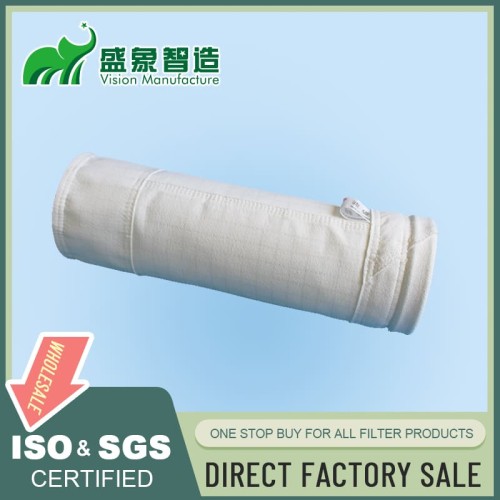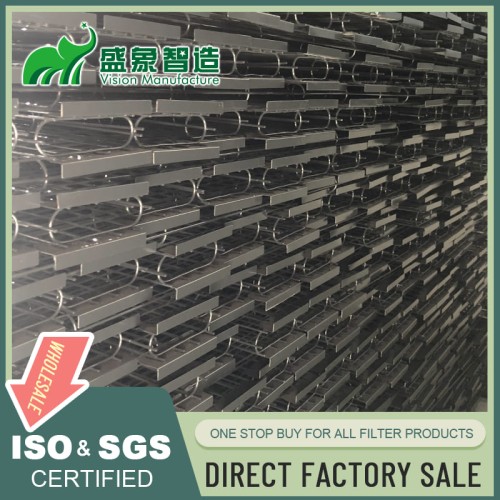
Bag Filter Advantages and Disadvantages: Navigating the Pros and Cons
I. Introduction
In the realm of industrial filtration, bag filters stand as stalwart guardians, capturing particles and ensuring clean processes. This comprehensive guide explores the nuanced world of bag filters, shedding light on their advantages and potential pitfalls.
|
Heading |
|
I. Introduction |
|
II. Understanding Bag Filters |
|
III. Importance in Industrial Filtration |
|
IV. Types of Bag Filters |
|
A. Single Bag Filters |
|
B. Multi-Bag Filters |
|
V. Bag Filter Advantages |
|
A. Efficient Particle Removal |
|
B. Cost-Effective Solution |
|
C. Easy Installation and Maintenance |
|
D. Versatility in Applications |
|
VI. Bag Filter Disadvantages |
|
A. Limited Filtration Capacity |
|
B. Prone to Abrasion |
|
C. Potential for Contamination |
|
VII. Factors Influencing Performance |
|
A. Material Quality |
|
B. Design and Configuration |
|
VIII. Comparing Bag Filters to Other Filtration Methods |
|
IX. Case Studies: Success Stories and Challenges |
|
X. Overcoming Bag Filter Challenges |
|
XI. Conclusion |
|
XII. FAQs |
II. Understanding Bag Filters
Bag filters are a fundamental component of industrial filtration systems, designed to trap and remove impurities from gas or liquid streams. Their structure, comprising one or multiple interconnected bags, allows for effective particle capture.
III. Importance in Industrial Filtration
The role of bag filters extends across various industries, from manufacturing and petrochemicals to pharmaceuticals. Their efficiency in maintaining air and liquid purity makes them indispensable for ensuring product quality and regulatory compliance.
IV. Types of Bag Filters
A. Single Bag Filters
Single bag filters find applications in processes with lower contamination levels, providing a cost-effective solution for smaller-scale filtration needs.
B. Multi-Bag Filters
Multi-bag filters, with their enhanced filtration capacity, cater to industries with higher particulate loads, offering efficient and reliable filtration.
V. Bag Filter Advantages
A. Efficient Particle Removal
Bag filters excel in capturing particles of various sizes, ensuring a high level of filtration efficiency and maintaining product quality.
B. Cost-Effective Solution
The initial cost and maintenance expenses of bag filters are comparatively lower than some alternative filtration methods, making them an economical choice.
C. Easy Installation and Maintenance
The simplicity of bag filter systems facilitates easy installation and routine maintenance, minimizing downtime in industrial processes.
D. Versatility in Applications
Bag filters adapt to diverse applications, from removing contaminants in water treatment to capturing dust particles in manufacturing processes.
VI. Bag Filter Disadvantages
A. Limited Filtration Capacity
In scenarios with extremely high contaminant loads, bag filters may have limitations in terms of filtration capacity and may require frequent replacements.
B. Prone to Abrasion
Certain applications, especially those with abrasive particles, can lead to wear and tear on bag filters, reducing their lifespan.
C. Potential for Contamination
In some cases, improper maintenance or failure to replace bags promptly can lead to the potential release of contaminants, posing a risk to processes and products.
VII. Factors Influencing Performance
A. Material Quality
The choice of bag filter material significantly influences its performance. Assessing the compatibility with the substances being filtered is crucial.
B. Design and Configuration
The design and configuration of bag filter systems impact their efficiency. Proper engineering ensures optimal performance in varying industrial settings.
VIII. Comparing Bag Filters to Other Filtration Methods
Explore how bag filters stack up against alternative filtration methods, providing insights into when and why they might be the preferred choice.
IX. Case Studies: Success Stories and Challenges
Real-world examples showcase instances where bag filters have excelled and challenges they've faced, offering practical insights for industries.
X. Overcoming Bag Filter Challenges
Mitigation strategies and technological advancements that address the challenges associated with bag filters.
XI. Conclusion
Bag filters, with their blend of advantages and disadvantages, continue to be a cornerstone in industrial filtration. Understanding their intricacies allows industries to harness their benefits while mitigating potential drawbacks.
XII. FAQs
1. How long do bag filters typically last before replacement is needed?
The lifespan of bag filters varies based on factors such as the application, contaminant levels, and maintenance practices. Regular assessments are key.
2. Are bag filters suitable for high-contamination environments?
While bag filters are efficient, extremely high contaminant levels may necessitate frequent replacements. Multi-bag systems offer increased capacity.
3. Can bag filters be used for both liquids and gases?
Yes, bag filters are versatile and can effectively filter both liquids and gases, making them suitable for a range of industrial applications.
Additional Resources:
· U.S. Environmental Protection Agency (EPA)
· World Health Organization (WHO)
· Occupational Safety and Health Administration (OSHA)


